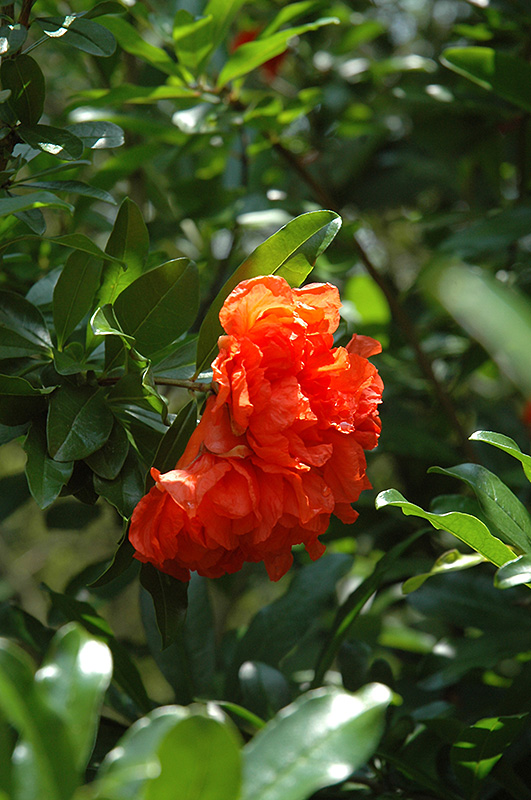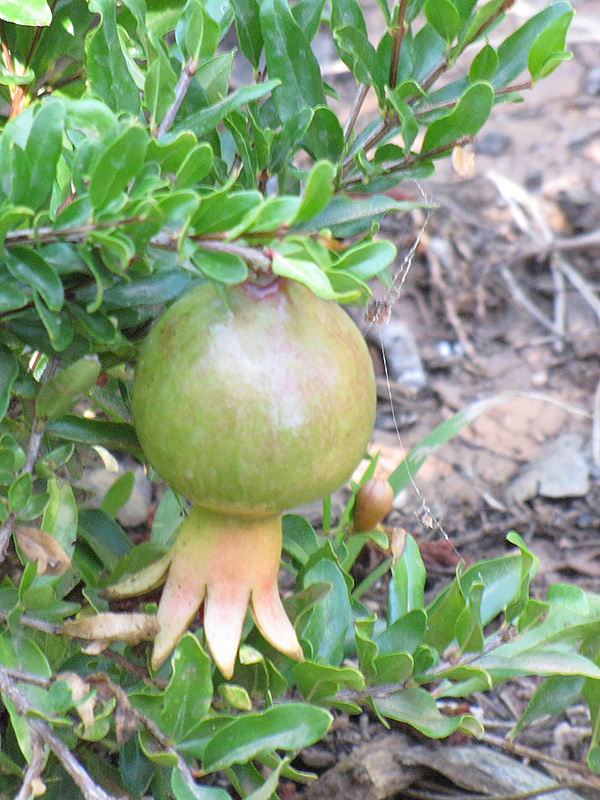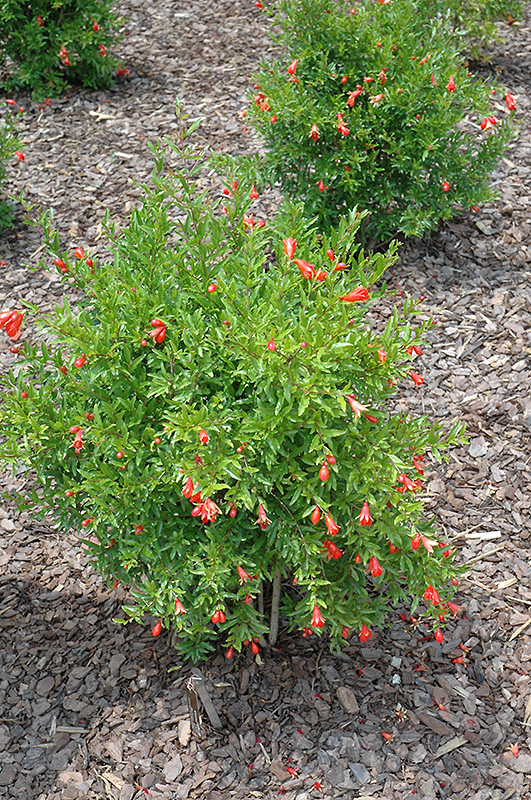Plant Finder
Height: 4 feet
Spread: 3 feet
Sunlight:
![]()
Description:
This lovely dwarf variety matures into a small dense habit with individual orange-red flowers that hang from the ends of branches in late summer, followed by small red fruit; this selection is great for bright indoor areas
Features & Attributes
Dwarf Pomegranate has nodding tomato-orange tubular flowers at the ends of the branches in late summer, which are interesting on close inspection. Its glossy oval leaves remain dark green in color throughout the year. The red oval seeds are edible and have a sweet taste and a juicy texture. Note that in general, it can be difficult to get plants to reliably produce fruit indoors; this may be a challenge best reserved for adventurous and experienced gardeners.
This is a dense multi-stemmed evergreen houseplant with a mounded form. This plant may benefit from an occasional pruning to look its best.
Planting & Growing
When grown indoors, Dwarf Pomegranate can be expected to grow to be about 4 feet tall at maturity, with a spread of 3 feet. It grows at a slow rate, and under ideal conditions can be expected to live for approximately 30 years. This houseplant requires direct sun for optimal performance, and should therefore be situated in a room that gets bright sunlight for a good part of the day; it is not a good choice for rooms lit only by artificial light. It is very adaptable to both dry and moist soil, but will not tolerate any standing water. The surface of the soil shouldn't be allowed to dry out completely, and so you should expect to water this plant once and possibly even twice each week. Be aware that your particular watering schedule may vary depending on its location in the room, the pot size, plant size and other conditions; if in doubt, ask one of our experts in the store for advice. It is not particular as to soil pH, but grows best in rich soil. Contact the store for specific recommendations on pre-mixed potting soil for this plant.
There are many factors that will affect the ultimate height, spread and overall performance of a plant when grown indoors; among them, the size of the pot it's growing in, the amount of light it receives, watering frequency, the pruning regimen and repotting schedule. Use the information described here as a guideline only; individual performance can and will vary. Please contact the store to speak with one of our experts if you are interested in further details concerning recommendations on pot size, watering, pruning, repotting, etc.
-- THIS IS A HOUSEPLANT AND IS NOT MEANT TO SURVIVE THE WINTER OUTDOORS IN OUR CLIMATE --




